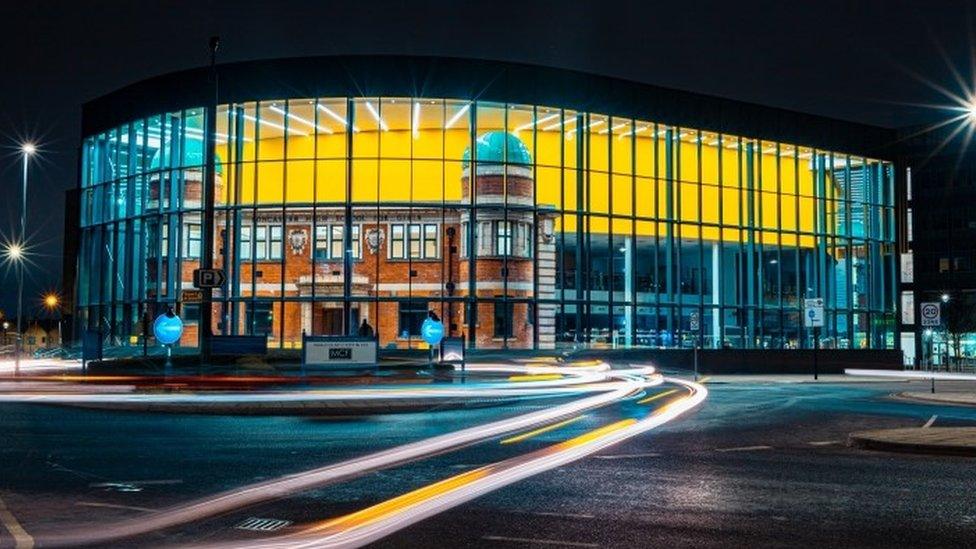Rare black rhino head found in Doncaster Museum archive
- Published

The council said there had been cases of rhino heads in museums being vandalised due the value of their horns
Staff at a council-run museum which charts the history of a Yorkshire town were surprised to find a rare black rhino head in their archives.
The exotic specimen, found with a collection of 7,000 beetles, was in storage at Doncaster Museum for years.
Staff at the attraction, which displays artefacts from the local area, said the unusual items had "no link" to the town.
They have arranged for the exhibits to be re-homed at other museums.
Doncaster Council said the potentially valuable rhino head - mounted by renowned 19th century taxidermist Rowland Ward - presented a possible security risk.
The critically endangered animal's horn is highly valued in Chinese medicine, the authority said, and there were cases of similar specimens being vandalised for their prized protuberance.
According to the Local Democracy Reporting Service, museum officers said that vandalism often involved violence to staff members.
They did not feel they could care for such a valuable object which did not have a "Doncaster provenance", they added.
Laura Trinogga, from Doncaster Museum, said they had been advised by the Natural Sciences Collections Association that Leeds Museums and Galleries would take the rhino head.
"It is currently on loan to them pending the transfer of ownership," she said.

The council's museum team said it was unclear how the items ended up in Doncaster
The Longhorn beetle collection, consisting of about 7,000 species, is said to be "internationally important," according to staff.
Thought to have been a loan from another museum, it had been poorly stored in old wooden cabinets, leaving it susceptible to pest infestation.
Ms Trinogga said it had been recommended the beetles should be transferred to the Natural History Museum, which could "look after it to a higher standard, as well as making it accessible to researchers".
"It is also likely that a proportion of the collection came from The Natural History Museum originally and the material was never returned," she said.

Follow BBC Yorkshire on Facebook, external, Twitter, external and Instagram, external. Send your story ideas to yorkslincs.news@bbc.co.uk, external.